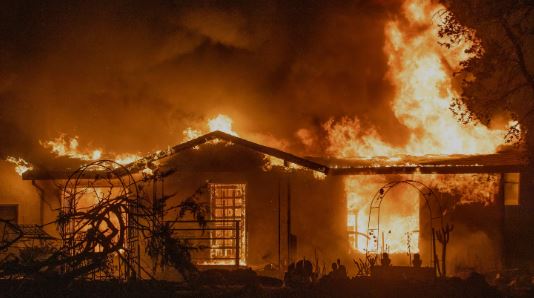MEP Strategies for Building Resilience in Wildfire-Prone California
Wildfires continue to devastate California, making it more urgent than ever to design buildings that can endure these disasters. MEP strategies now play a critical role in modern construction, especially in fire-prone areas like the San Francisco Bay Area, Los Angeles, and the Central Coast. These fast-moving wildfires can destroy entire communities within hours.
This blog explores essential MEP (mechanical, electrical, and plumbing) strategies for building resilience. From fire-resistant materials to systems that handle extreme heat, we’ll cover practical methods to protect both structures and lives during catastrophic wildfires.
1. Introduction to building resilience in wildfire-prone areas
This is where MEP strategies for building resilience truly make a difference in protecting both life and property. The Golden State, known for its year-round sunshine and idyllic scenery, has become increasingly vulnerable to the unrelenting threat of wildfires.
This is where Mechanical, Electrical, and Plumbing (MEP) strategies come into play. By incorporating resilience measures into their designs, building professionals can help mitigate the risks associated with wildfires, ensuring that structures can withstand the heat, flames, and smoke that come with these disasters. From designing buildings with fire-resistant materials to incorporating state-of-the-art firefighting systems, the incorporation of MEP strategies can be the difference between life and death.
2. Understanding the risks and consequences of wildfires
California’s wildfires serve as a harsh reminder of nature’s destructive power. Millions live in areas where wildfires are a constant threat. These disasters no longer feel distant—they can erupt anytime, leaving behind widespread destruction.
A single fire can destroy homes, shut down businesses, and challenge emergency responders. The damage isn’t limited to the fire’s path—smoke and ash harm air quality, water supplies, and crops. The financial losses can reach billions, with recovery taking years.
Designers must understand these risks to build resilient structures. By planning ahead, we can reduce the damage and keep communities safer. This includes using strong materials and systems built to endure extreme conditions. Smart design choices now can protect lives and property in the future.
3. MEP Strategies for Building Resilience in Disaster-Prone California
Designing for disasters has become a pressing reality for building owners and developers in wildfire-prone California. Recent devastating wildfires have exposed the inadequacy of traditional design approaches in ensuring occupant safety. A proactive, resilient design strategy is now imperative, addressing the unique challenges of California’s environment.
In this context, MEP (Mechanical, Electrical, and Plumbing) systems play a critical role in building resilience. By integrating MEP strategies into the design process, professionals can create buildings that are not only more resilient but also more sustainable, efficient, and occupant-friendly. This may involve incorporating features such as fire-resistant materials, improved ventilation systems, and redundant plumbing and electrical infrastructure to ensure that critical systems remain operational even in the event of a disaster.
4. Smart Systems and Real-Time Monitoring
Smart building technologies add an extra layer of protection. Install sensors that monitor temperature, smoke, and air quality. Connect these to automated systems that shut windows, turn off HVAC units, and activate alarms when fire is detected.
Real-time data helps building managers act quickly. It also gives first responders valuable information, improving emergency response and evacuation efforts.
5. How to select the right materials for wildfire-resistant construction
Innovation continues to drive better protection against wildfires. New technologies and materials are helping MEP systems perform even in extreme conditions.
- Fire-Resistant Insulation: Mineral wool and intumescent coatings protect ducts, pipes, and wires from high temperatures.
- Smart Sensors: Heat and smoke sensors provide early warnings and automatically shut down systems or activate sprinklers.
- Advanced Air Quality Monitoring: Indoor air monitors detect pollutants and adjust HVAC settings in real time to maintain safe conditions.
These innovations not only boost safety but also reduce maintenance and energy costs over time.
6. Electrical MEP Strategies for Building Resilience
As wildfires smolder on California’s outskirts, architects, engineers, and builders must prioritize fire-resistant roofing systems. The state’s frequent, intense wildfires necessitate roofs that withstand extreme heat and flames. A well-designed fire-resistant roof can mean the difference between a structure standing or turning to ashes.
Designing such roofing requires understanding materials and technologies that mitigate fire impact. This includes selecting non-combustible materials like metal, clay, or concrete and designing systems to resist wind-borne sparks and embers.
7. Importance of fire-resistant cladding and exterior finishes
As the flames of a raging wildfire lick at the exterior of a building, the materials that surround it can be the difference between a structure that stands tall and one that succumbs to the inferno. In wildfire-prone California, the importance of fire-resistant cladding and exterior finishes cannot be overstated. These components, often overlooked in the design process, play a critical role in slowing the spread of fire and providing a critical barrier between the building’s interior and the raging flames.
Fire-resistant cladding, specifically designed to withstand extreme temperatures, can be installed on the exterior of a building to prevent the spread of flames. These materials, such as fire-resistant panels or composite materials, are engineered to withstand temperatures of up to 1,800°F, providing a critical layer of protection against the intense heat of a wildfire.
8. Strategies for fire-resistant glazing and window systems
As the devastating effects of California’s wildfires continue to ravage the state, building owners and architects are increasingly seeking innovative solutions to mitigate the risks of property damage and loss of life. One critical area of focus is the design of fire-resistant glazing and window systems, which can play a crucial role in preventing or slowing the spread of fire and smoke. By incorporating advanced materials and technologies, building designers can create a safer and more resilient environment for occupants.
9. Designing for fire-resistant electrical systems
As the embers of a devastating wildfire fade into the distance, the charred remains of a building can serve as a stark reminder of the importance of designing for fire-resistance in electrical systems. In California, where wildfires are an increasingly ominous threat, incorporating fire-resistant electrical systems into the design of a building is no longer a luxury, but a necessity. This requires a comprehensive approach that spans the entire construction process, from material selection to installation and maintenance.
In this context, designing for fire-resistant electrical systems involves specifying materials and components that can withstand extreme temperatures, while also ensuring that the system is properly installed and maintained to minimize the risk of electrical failure. This includes using fire-resistant materials for cable trays, conduit, and other components, as well as installing surge protectors and circuit breakers that can detect and interrupt electrical faults before they spread.
10. How to design for fire-resistant plumbing systems
When it comes to designing for fire-resistant plumbing systems, California building codes have specific requirements to ensure that these critical systems remain functional even in the face of a devastating wildfire. A common misconception is that plumbing systems are not a significant concern in the event of a fire, but nothing could be further from the truth. A fire can cause pipes to burst, rendering water supply and drainage systems inoperable, leading to catastrophic consequences.
To address this, designers must consider the use of fire-resistant materials, such as fire-resistant pipes, fittings, and valves, which can withstand extreme temperatures and are designed to minimize damage. Additionally, the placement of pipes and fittings in areas that are less susceptible to damage from fire, such as exterior walls or protected areas, can further reduce the risk of system failure.
Moreover, specifying fire-resistant valves and controls can help prevent the spread of fire and prevent damage to the plumbing system. For instance, fire-rated ball valves and gate valves can be used to isolate sections of the plumbing system, allowing for controlled water flow and minimizing the risk of fire spread.
Wildfires are a growing threat in California. Resilient MEP design plays a key role in protecting lives and property. Using fire-rated materials, smart systems, and reliable backup power creates safer environments. Compliance with California codes and NFPA standards ensures long-term performance.
By planning ahead and integrating wildfire-resilient strategies, engineers can build systems that withstand disaster. The result? Smarter, safer, and more sustainable buildings.
Visit: https://gdiengdesign.com/gdiengdesign-mep/

















































